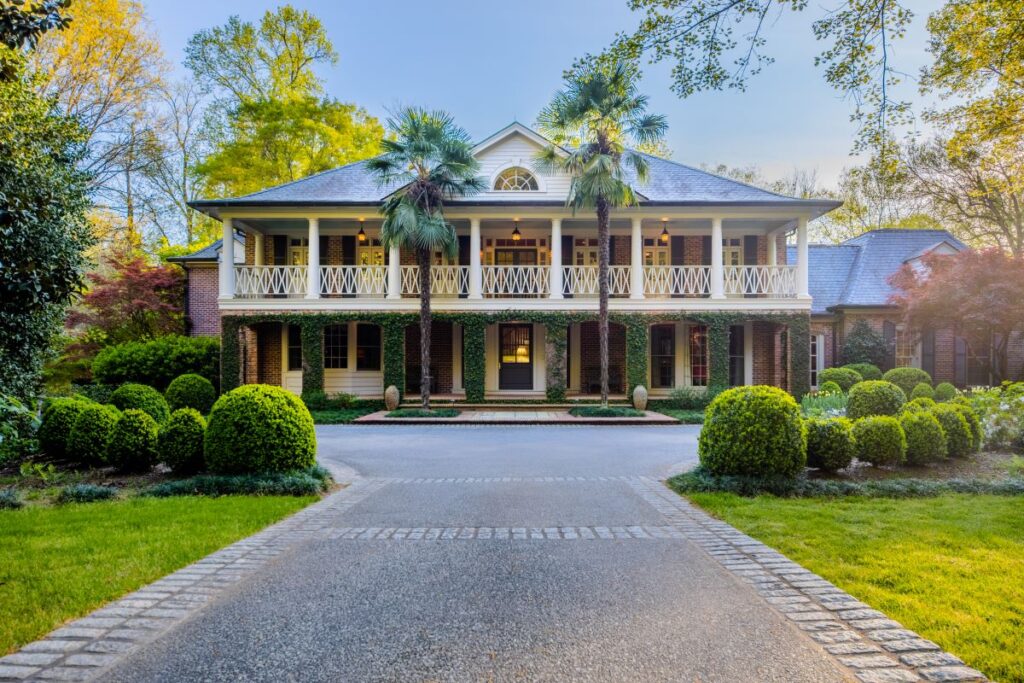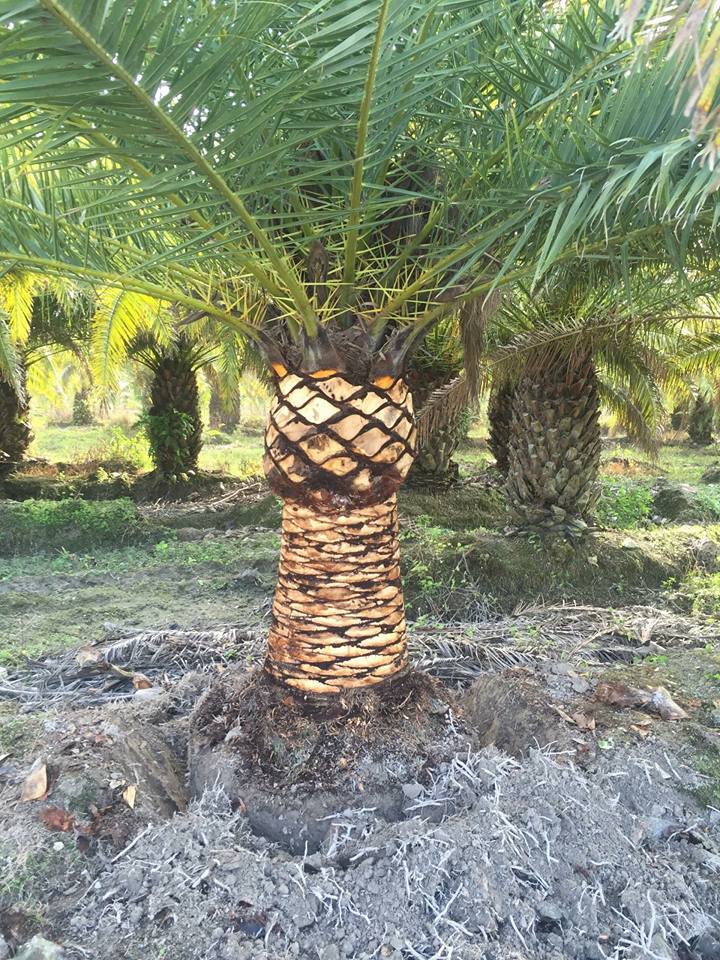Palm Trees in Georgia
The best Palm Trees for Georgia are the mighty Queen Palm, a small, single-trunk tropical tree with feathery foliage. They grow up to twenty feet and can survive temperatures of 20 degrees or less, with brief dips below that level. In addition, they are very hardy and can withstand severe weather, such as the winter storms known as ‘Uri’ in 2021, which devastated parts of northern Georgia.
Other palm trees suitable for Georgia include the Cabbage Palm and Pindo Palm. Although more suited for Southern Georgia, these palms are still capable of surviving winters with temperatures as low as 5°F. They do require protection from frost when temperatures drop below twenty-five degrees, but are otherwise resistant to cold conditions. Native to Georgia, the Needle Palm and Saw Palmetto are cold-hardy and can grow in the state. What Is Blue Palm Tree

If you are planting a Palm Tree in Georgia, you should consider the type of climate that you live in. Some types of palms grow well in Zone 7 or 8, and will not reach the heights of true tropical palms. However, if you live in a temperate climate, you should choose a variety of native palms. The Cabbage Palm, Saw Palmetto, and Needle Palm are all hardy enough to tolerate winter temperatures in the South.
Types of Palm Trees in Georgia
There are many different types of palm trees in Georgia. The most common are cultivated for the landscape. Some are native to the state, such as the saw palmetto. Other palms, such as the mule palm and eucalyptus, are hardier and can tolerate cold temperatures. In Georgia, however, it is best to stay away from these species. In these parts, there are few native palms that grow.
The taller varieties are best grown near wetlands, as they need plenty of sun and freshwater. The tallest varieties include the Canary Island date palm, Phoenix canariensis, and the Mexican fan palm. These trees grow well in USDA Zones 8a and above. The smaller varieties can be used as ornamental plants or as garden trees. A variety of palms will thrive in Georgia. Here are some of the most popular types of palms in the state.
A native palm of Georgia is the cabbage palm tree, which grows well in the state. Its tall leaves are ideal for landscaping and are easily maintained. It has a subtropical climate and can survive winter temperatures. A few varieties are more cold-hardy, and grow well in the colder areas of Florida. If you’re planning to plant a tropical palm in your yard or garden, it’s a good idea to learn more about them before you plant them.
palm trees for sale in georgia
Palm trees are an excellent choice for landscaping in Georgia. This southern state has a variety of climates and weather patterns, but most varieties are suitable for the region. Because palms can go weeks without water, you can enjoy the beauty of a beautiful tree in your yard without a lot of maintenance. These plants require little watering, pruning, or trimming and don’t require much space. If you have sandy soil and enough sun, they will grow quickly and remain healthy.

The official state tree of Florida, the Sabal Palmetto is an attractive palm that is perfect for Georgia landscapes. It has a 6-20 foot trunk and costs around $89. Other options include the pineapple Palm and the Queen Palm. All of these trees have a grey trunk and are suitable for colder climates. Some types are also suitable for growing in Georgia. If you are thinking about purchasing a palm tree for your landscaping, make sure you know the type of soil and climate in your area.
A few common types of palm trees can be purchased for landscaping in Georgia. The sabal palm, official state tree of Florida, is a good choice for Georgia landscapes. With its 6-20′ clear trunk and grey trunk, this tropical tree will look great in any landscape. Other types of palm trees for sale in Georgia include the pindo and windmill palms. While most palm trees are hardy in Georgia, the Pindo Palm is only available as a tropical tree.
palm trees that grow in georgia
If you want a tall, tropical tree, consider palm trees that grow in Georgia. Many tall palms grow in wetlands or on barrier islands. These are slow-growing and require plenty of sunlight. These include the Canary Island date palm, Medjool Date Palm, and Mexican fan palm. These species typically grow best in USDA zones 8b through 11, and they can also tolerate part shade. They thrive in hot, humid climates.
Palms that grow in Georgia are usually native to the state. The Serenoa repens is one of these, commonly found under pine trees in the piedmont region. These trees can grow to 40 feet tall and form trunks. The silver foliage of this palm makes it a prized plant, and it’s used for fencing. The mediterranean fan palm is another great palm for Georgia. It can grow up to 12 inches per year, and its berries are often harvested from the wild and processed for the pharmaceutical industry. It grows well in this climate, and is commonly seen in Georgia and Texas.
Another type of palm that grows in Georgia is the cabbage-palm, which is found mostly in the piedmont region. This species is native to the southeast United States. It can grow from five to 10 feet tall and sometimes can even form a trunk. The needle palm is also a common tree in Georgia, but is native to the southern states. The leaves of the needle palm are dark green and shiny, and are prized by collectors.
palm trees in atlanta
There are several advantages to palm trees in Atlanta. For one, they are easy to grow. They do not require a lot of water or pruning and can survive in arid conditions. There are also a few types that are drought-tolerant, meaning they can go weeks without water. A good way to get started with this tropical plant is to buy a few seeds and start growing them yourself. You can purchase them from local building supply stores or online greenhouses, but remember that not all palms are suitable for the Atlanta area.
If you want to plant palms in Atlanta, you should know that most types are hardy in cold climates. The best palm trees to plant in Atlanta are those that are adapted to these climates. Windmill palms, for example, can survive a low temperature of -10 degrees Fahrenheit and are perfect for homes and businesses. The only downside of windmill palms is that they are not cold-hardy and are not recommended for cold climates.
If you live in Georgia, consider planting a tall palm tree. This type grows slowly and is suited for a protected area near a pool. It is similar to saw palmetto but has a more elegant appearance. For a more modern landscape, consider choosing a dwarf or mid-sized variety. A mid-sized Palm Tree is a great choice for Atlanta. They will add a tropical feel to any home or office and are a great choice for a yard or balcony.


